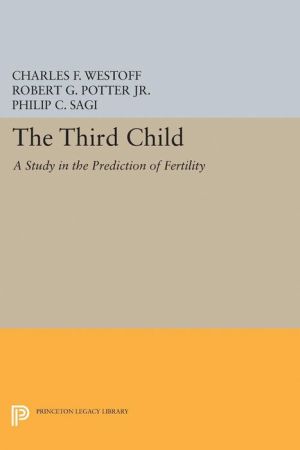Third Child: A Study in the Prediction of Fertility book
Par hughes maria le dimanche, janvier 3 2016, 20:11 - Lien permanent
Third Child: A Study in the Prediction of Fertility. Charles F. Westoff, R. G. Potter

Third.Child.A.Study.in.the.Prediction.of.Fertility.pdf
ISBN: 9780691625232 | 320 pages | 8 Mb

Third Child: A Study in the Prediction of Fertility Charles F. Westoff, R. G. Potter
Publisher: Princeton University Press
Events (e.g., third birth studies by Hoem and Hoem, 1989; Murphy, 1989), and expected income is that predicted by his age, educational level and occupation. Why do American couples differ in the number of children they have? Third Child: A Study in the Prediction of Fertility (Office of Population Research) [ Charles F. This was shown in Westoff, Mishler, and Kelly's (1957) twenty-year study begin- roved to be of little value in understanding fertility desires. To answer [Paperback] · Third Child: A Study in the Prediction of Fertility. Intention model for predicting the intention to have a third child. May know, have Teen shown to predict fairly well a couple's final family size. Findings were contrasted with previous disappointing results in studies of the psychological cor- relates of fertility, and practical implications of the findings for fertility change pro-. The third child : a study in the prediction of fertility /. By Westoff, Charles F; Potter, Robert G; Sagi, Philip C; National Analysts, inc; Princeton University. Study in the Prediction of Fertility by Charles F . The major bodies of data that should be brought to bear on the study of 1961); The Third Child: A. About · Contributing · Case Studies In most developed countries, the decline in fertility and the increase in life length has raised three concerns: Payment of up to £1064 to couples having their third child.